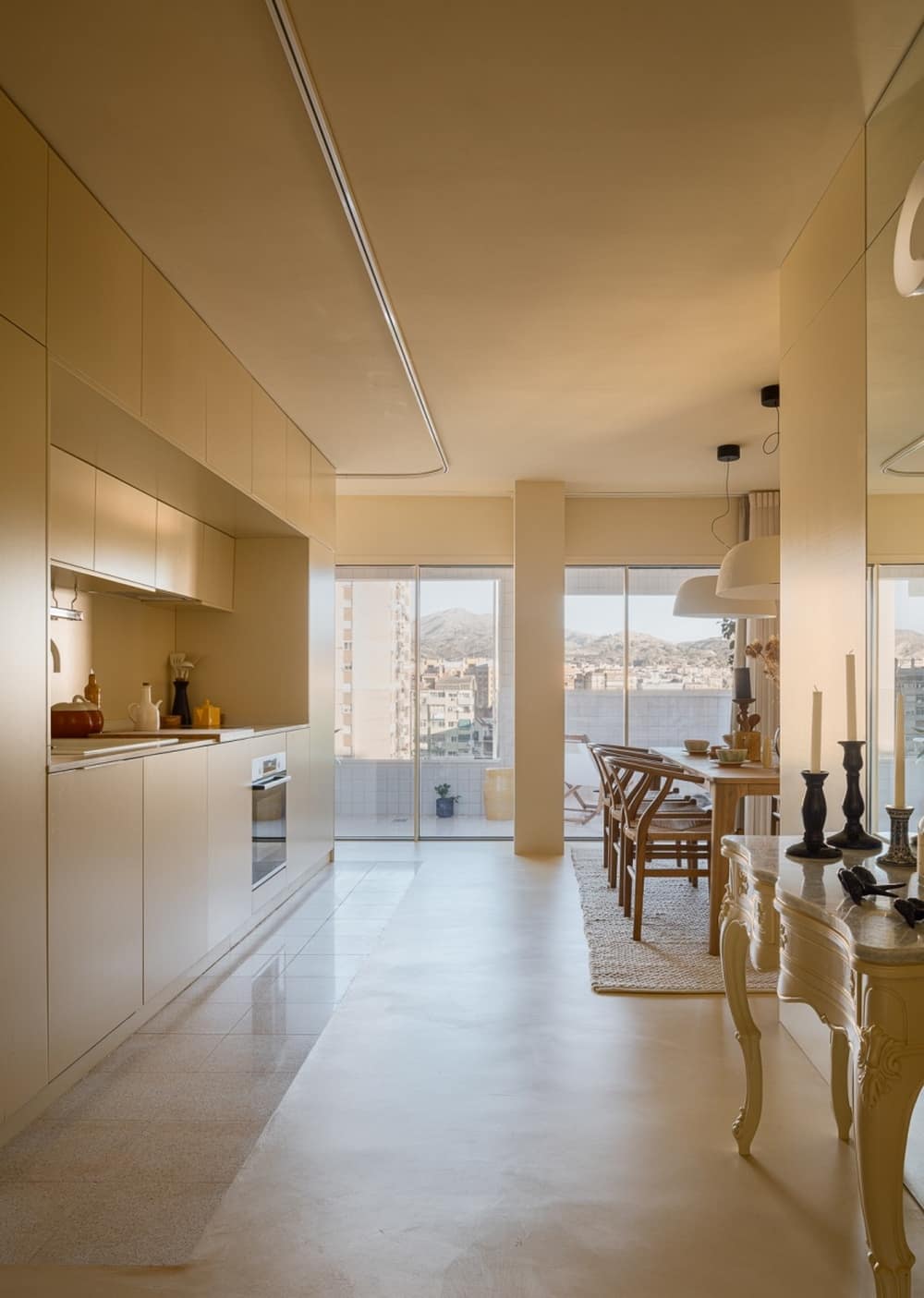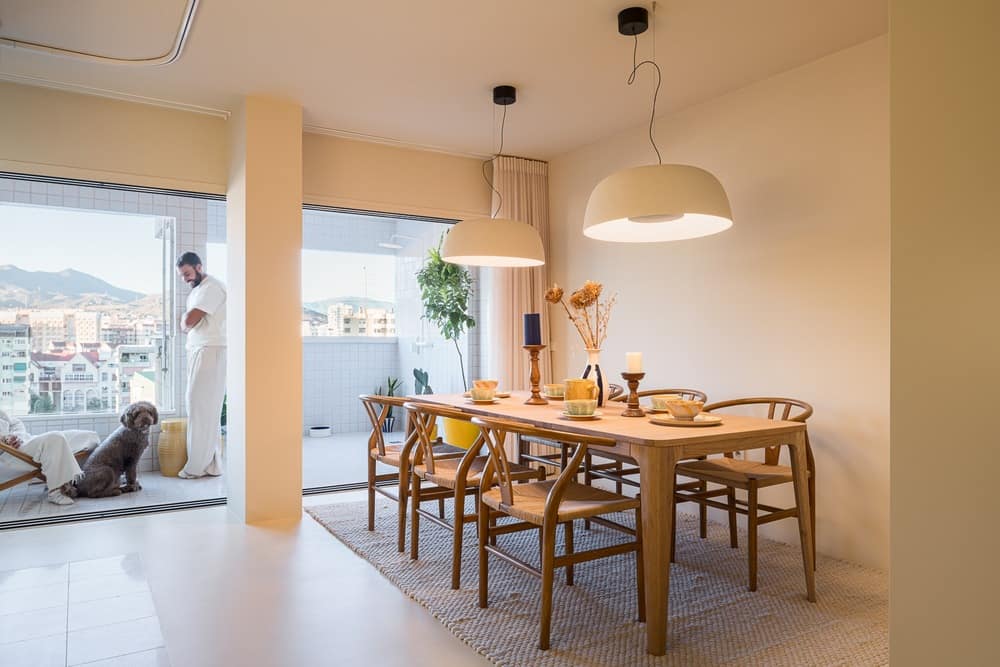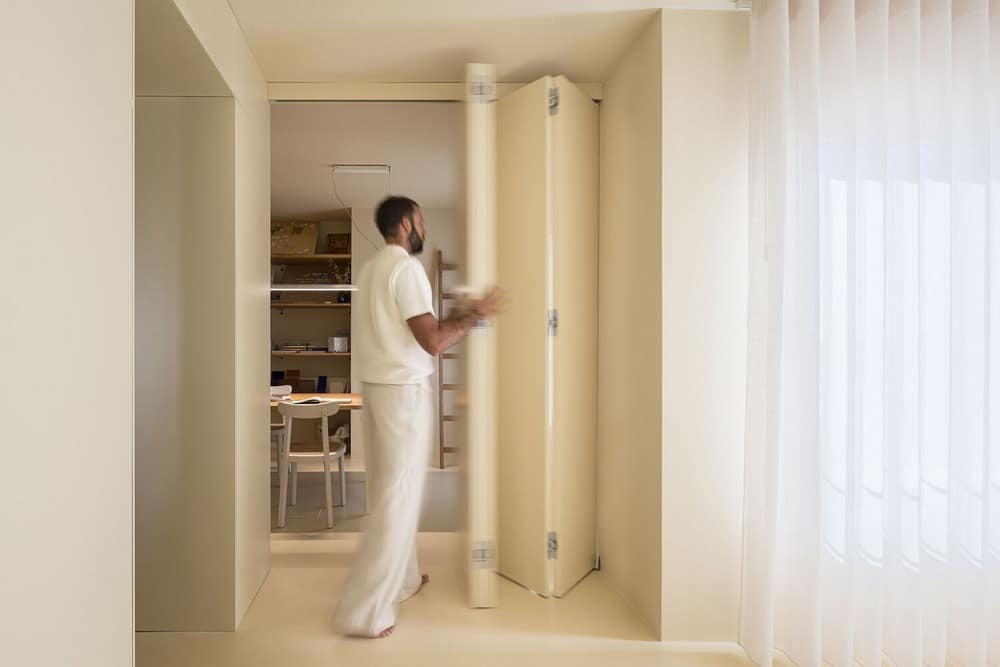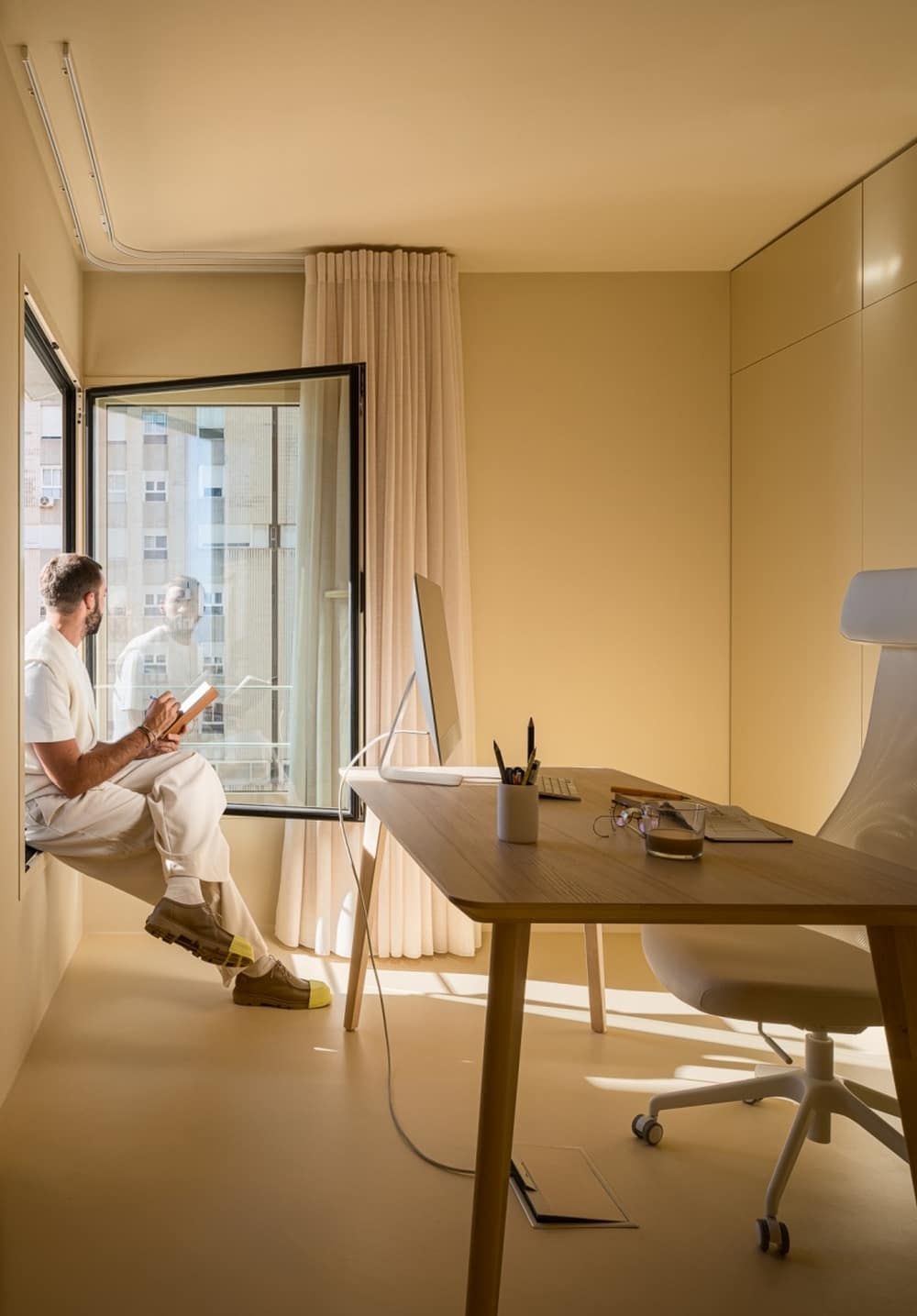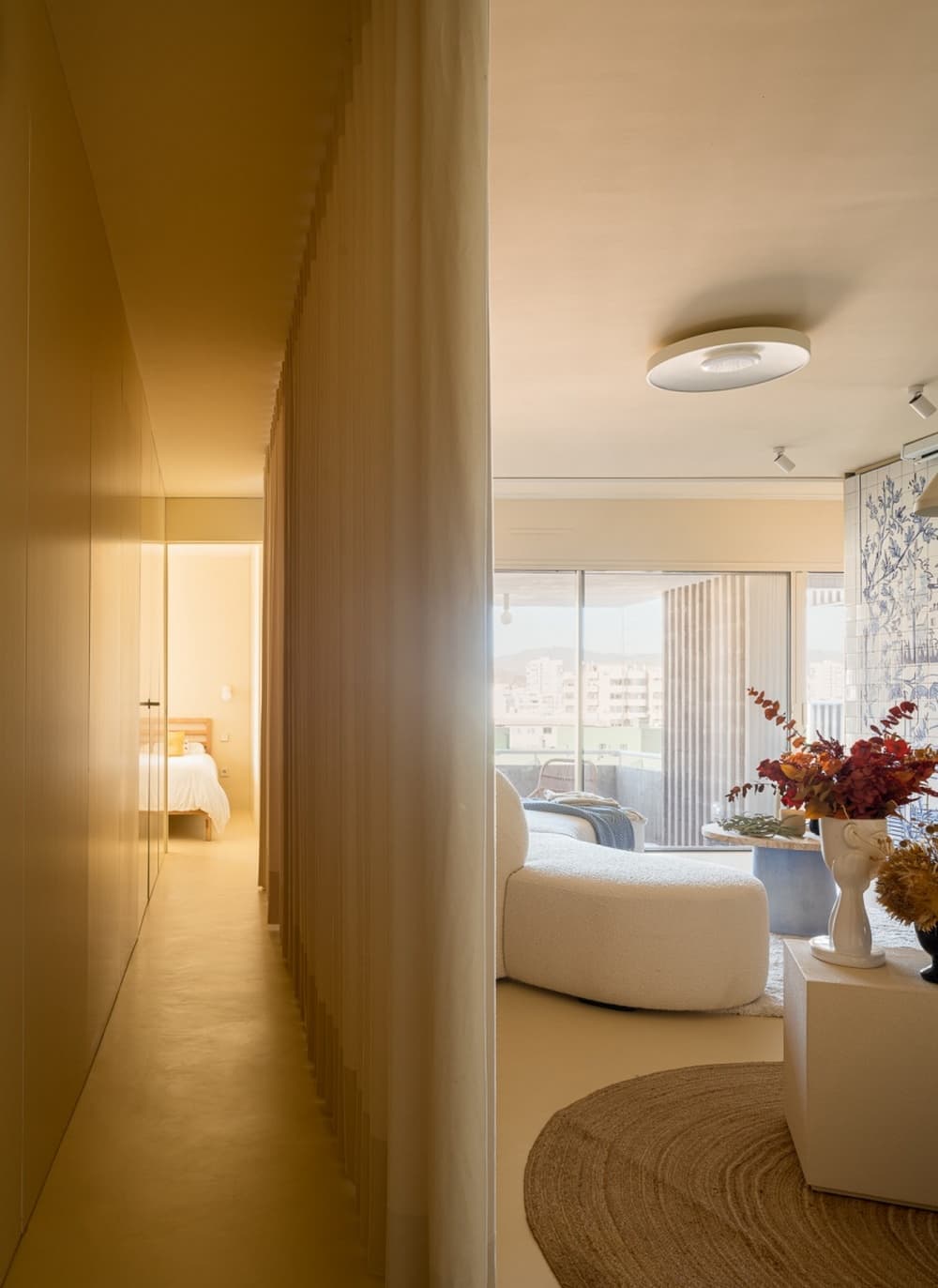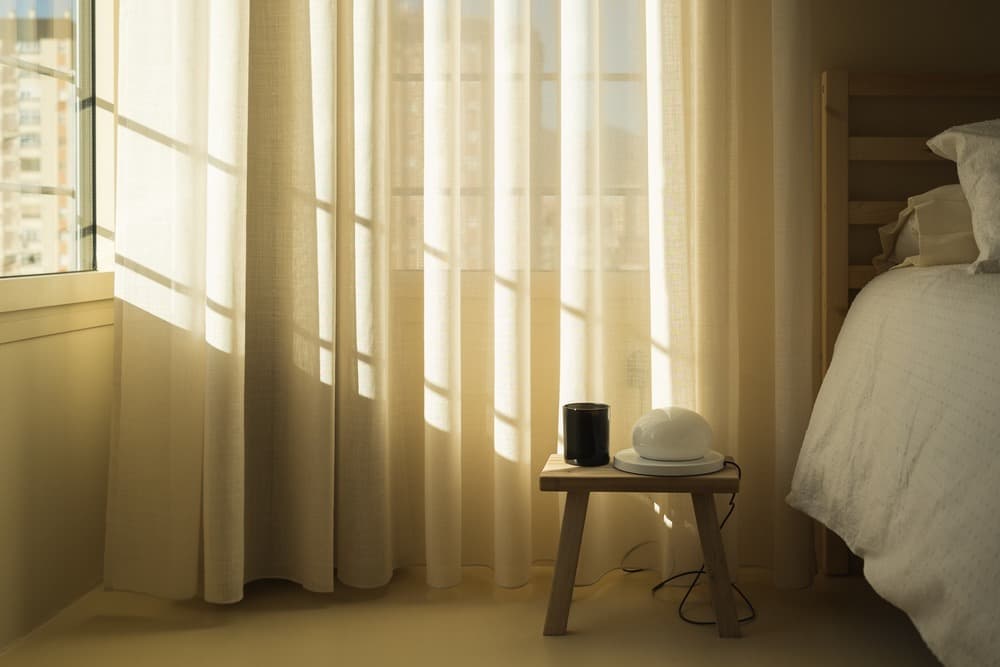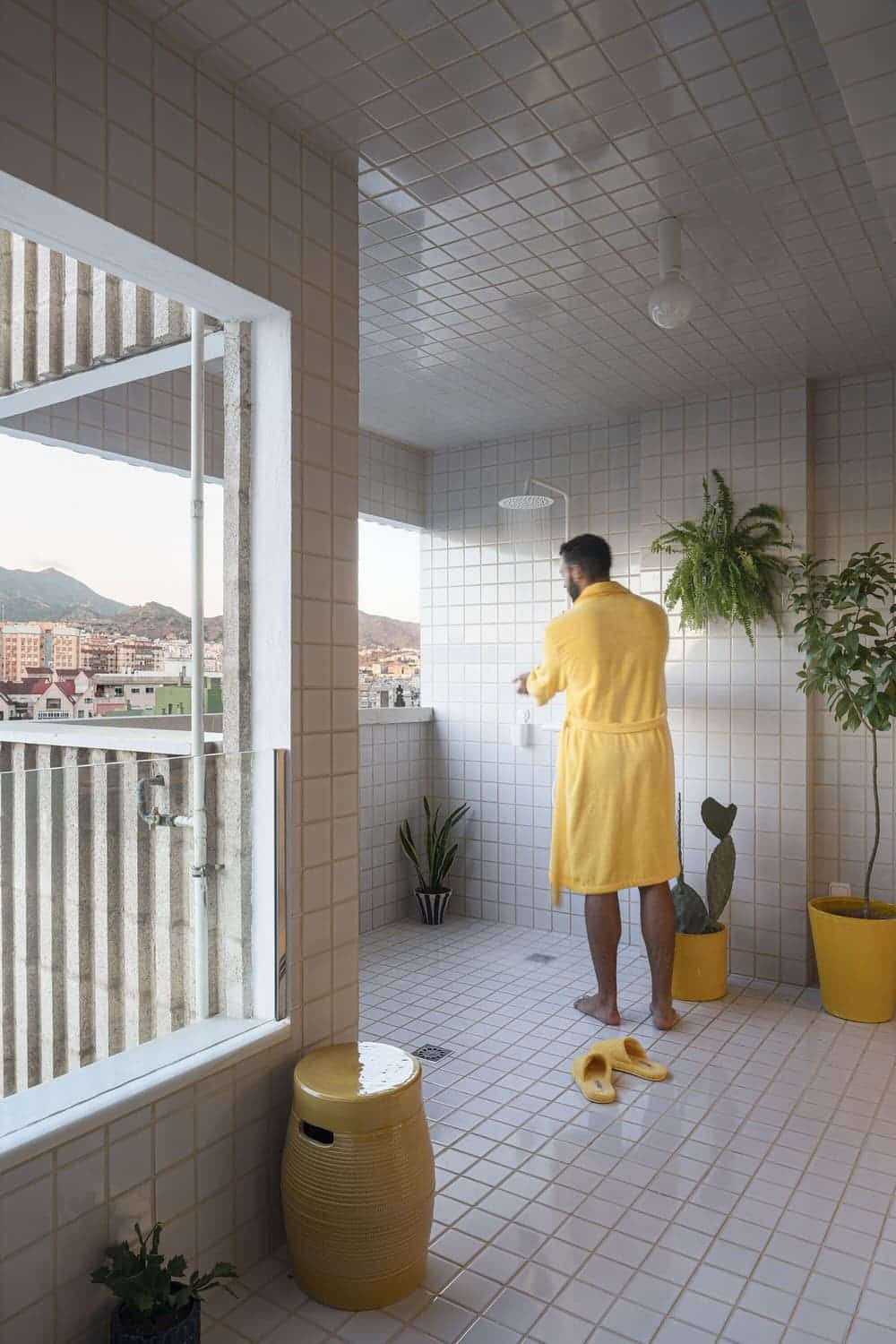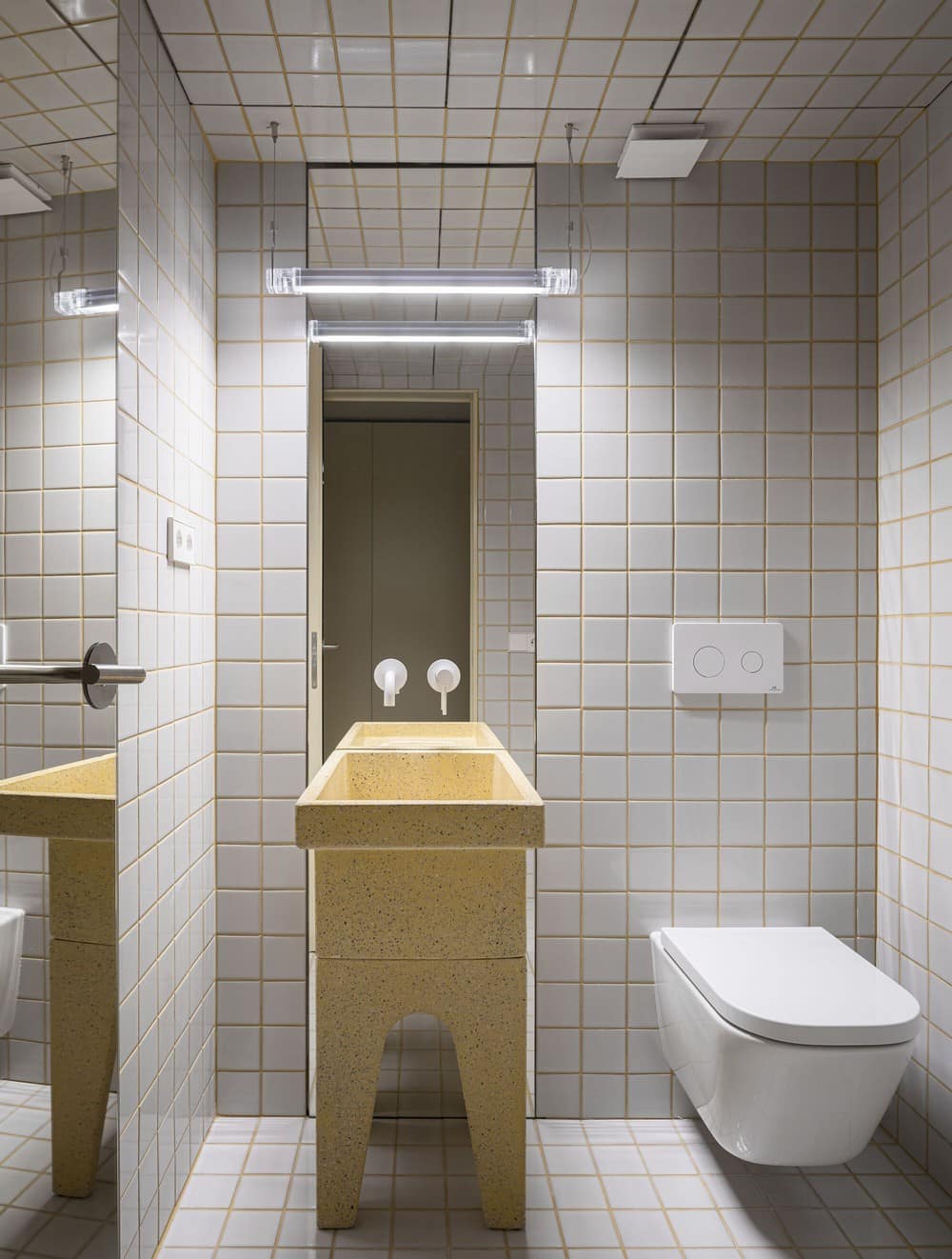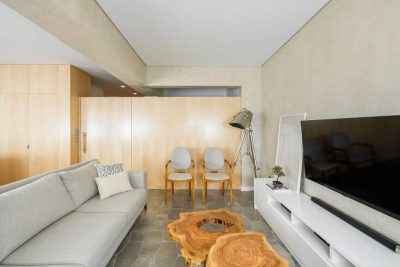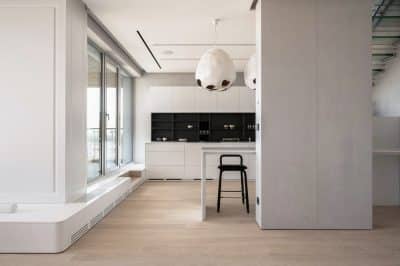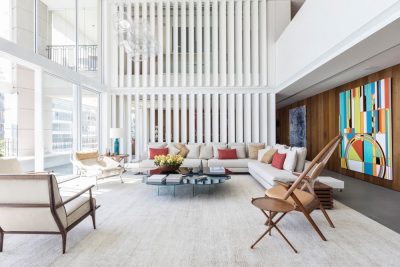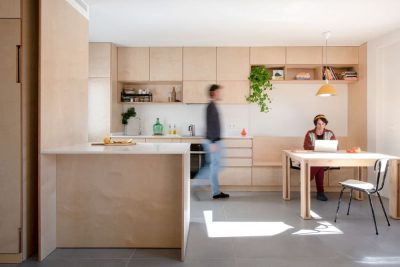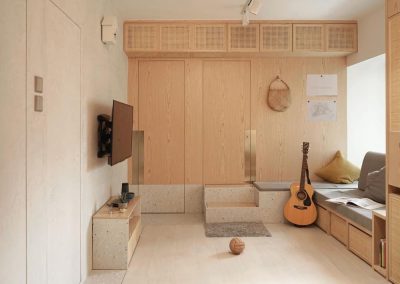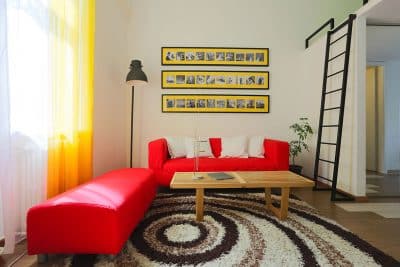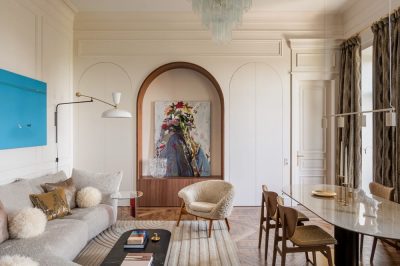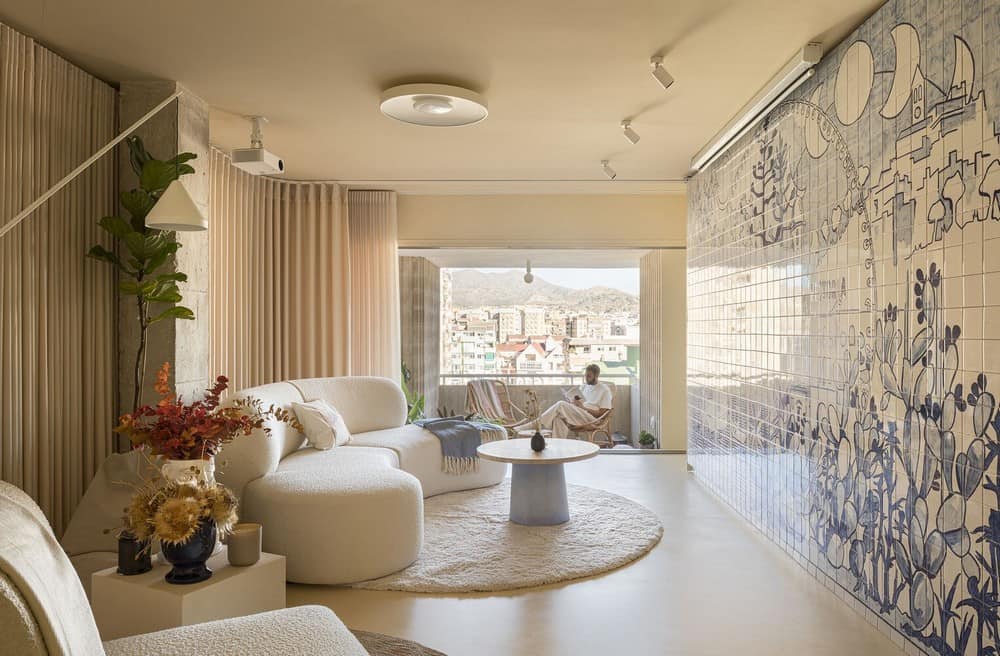
Project: Engawa Apartment
Architecture: FORarquitectura
Lead Architect: Francisco Ortega Ruiz
Collaborators: María Estrada Rojo
Artist: Martín España
Location: Málaga, Spain
Area: 155 m2
Year: 2022
Photo Credits: Juanca Lagares
Where the furrows of the fertile land reveal the stones of the subsoil, a simple and humble dwelling from the late 19th century rises. The imposing modesty of its gaze watches over the agricultural landscape and relates to it by opening its gaps to the territory.
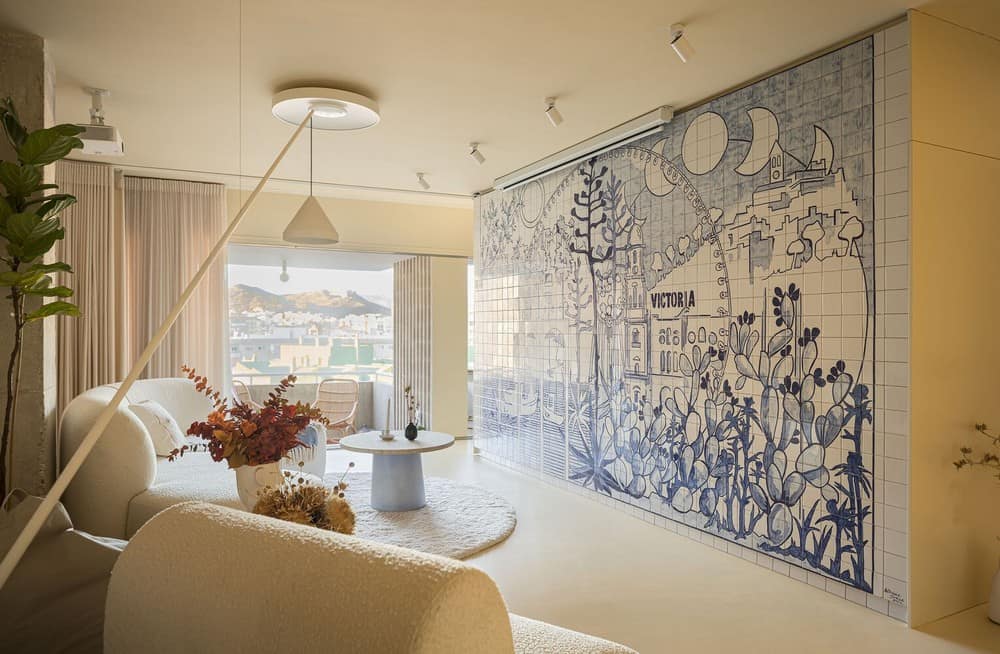
A century-old substandard housing lacking sanitary resources, unhealthy interior spaces due to lack of ventilation, poor indoor air quality due to the presence of capillary dampness, absence of thermal support tools to combat the coldest time of the year, and doubtful safety conditions make the long-standing construction unsuitable for habitation.
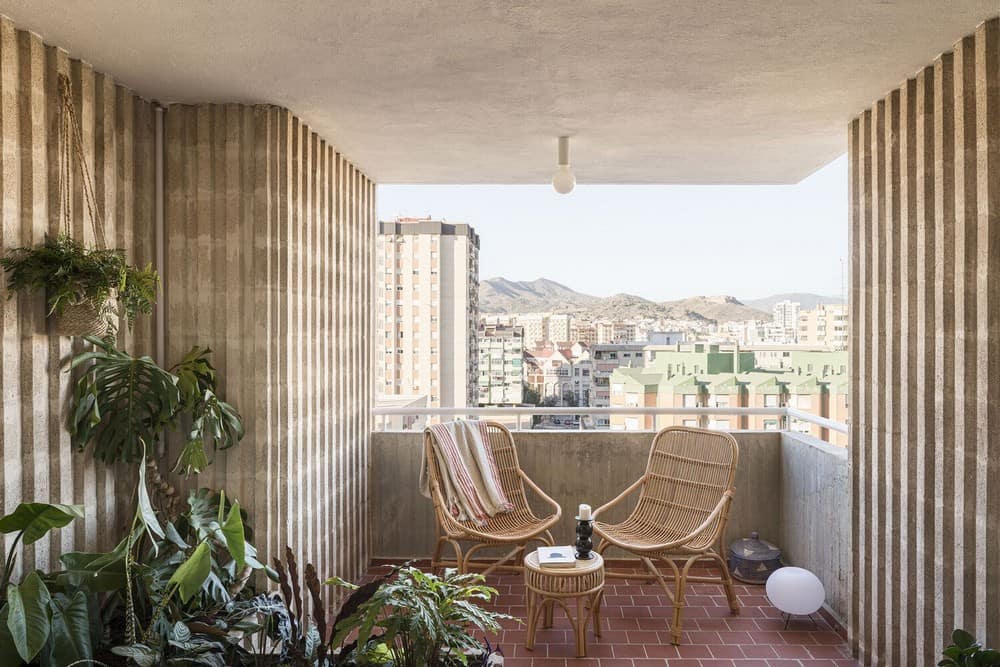
But the strong relationship between architecture and the building’s program with the rural context, the appearance of a type of stone block popularly known as Cantilla between its load-bearing walls (used in the construction of the Cathedral Naves of Malaga during the 1700s), the historical and landscape memory, and the intention to preserve the rural heritage that is, unfortunately, being silenced; impels and fuels the architect’s concern not to let a construction that is so humbly the biography of a staunch society that silently enriched the regional economy, the Axarquia, die.
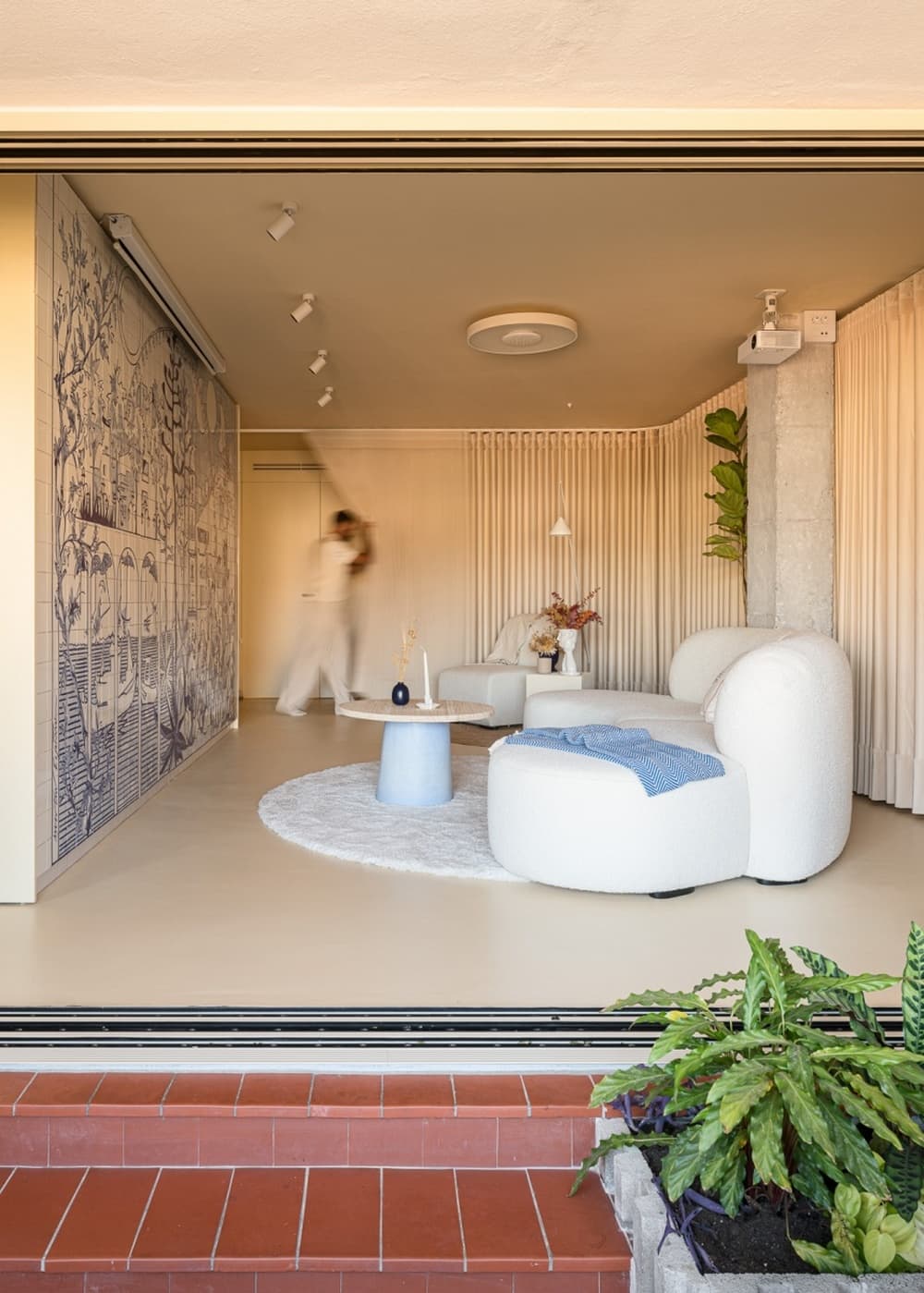
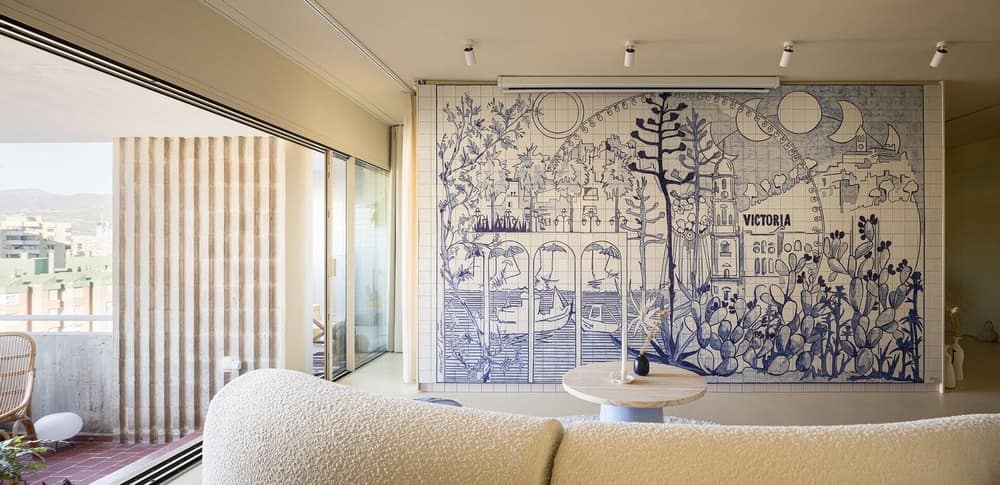
The interior intervention consists of the structural consolidation of a roof that was on the verge of collapse due to the bending of the wooden beams that supported it, as they were weakened by woodworm. An iron substructure is projected to support them. Inside the Engawa Apartment, the distribution is respected, opting only for the rehabilitation of spaces through the application of materials that blend into a timeless atmosphere and coexist with those that are recovered. Thus, in the bathroom, hallway, and bedroom areas, the walls are covered up to a height of 2.10 m (height of door lintels) with 14×28 cm Catalan tiles, generating a vertical tapestry that shelters the user in a warm environment.
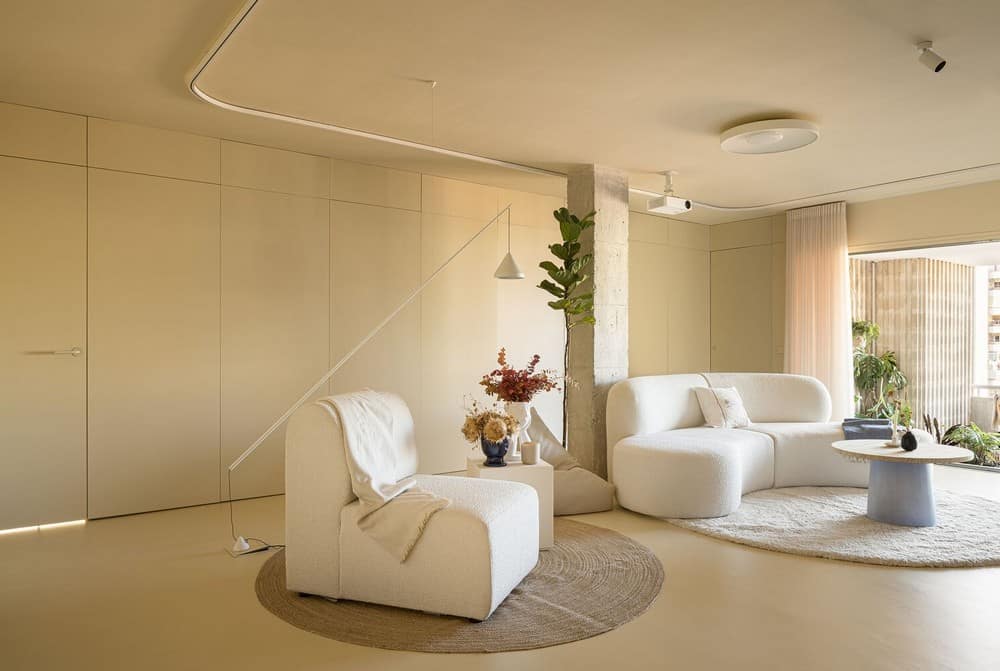
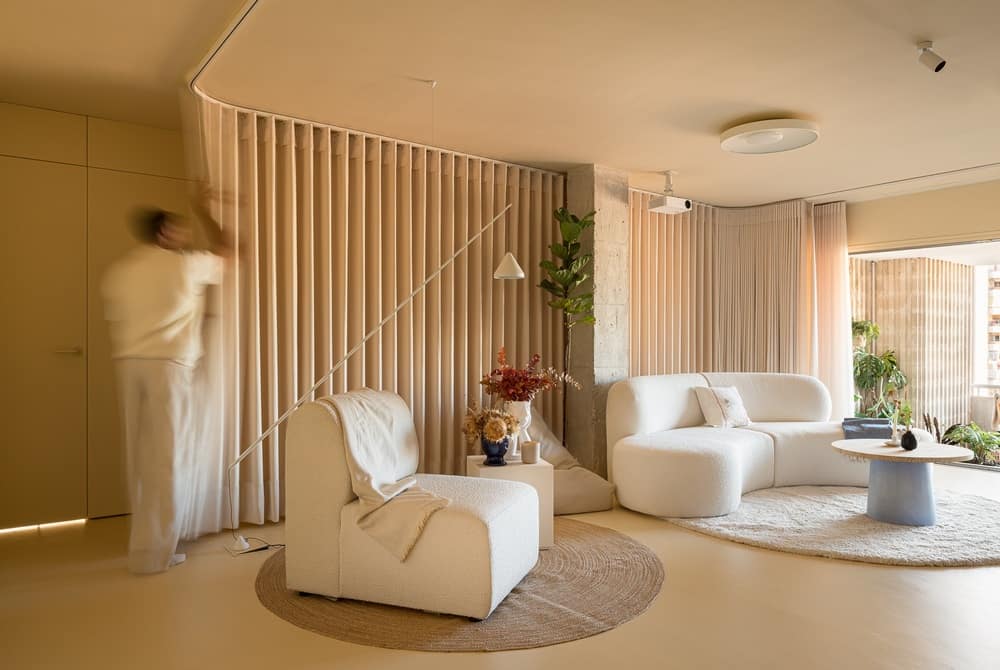
The rhythm of these tiles is altered upon reaching the bathroom, changing their dimensions to 5×25 cm on the sink cabinet and wall, to highlight their function. Glazed ceramic tiles in black indicate wet areas such as the bathtub or kitchen countertop. Terracotta tile floors are scraped and sanded to clean them and then protected with a resin film. White natural lime mortars ascend the walls, generating a healthy environment that allows the walls to breathe and prevents condensation. These ceramic materials contribute to interior thermal buffering, providing coolness when in the shade during the warm season or retaining accumulated heat in the walls during the cold season.
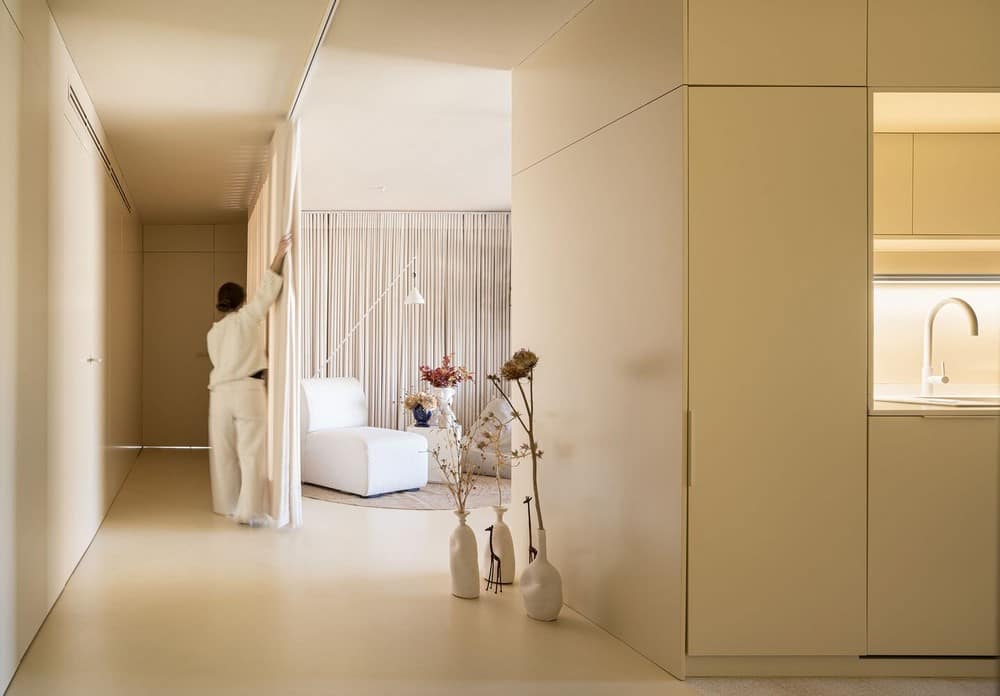
The area located on the east side of the Engawa Apartment contains the nocturnal and intimate program (bathroom, hallway, and bedroom), while the west-facing nave houses the more public area (living room/workshop and kitchen). This differentiation between spaces, use, and program is further emphasized with an interior design based on the creation of environments where materiality, light, and thermal comfort embrace the user and transport them on a rhythmic introspective journey to a sensory plane where sobriety, calmness, and hospitality invite the user to reflect and contemplate the spacetime.
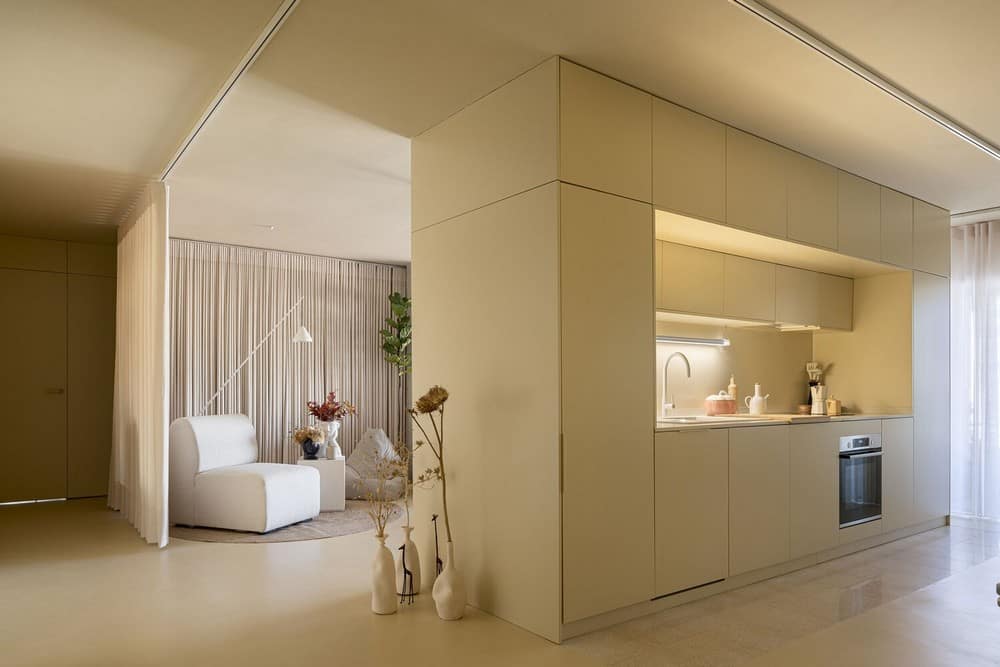
A timeless place protected from urban invasion. That encourages reflection on the life of a work, its history, and its relationship with the place to motivate us to think about new ways of life and the model of future sustainable architecture. What are the basic needs of human beings to inhabit a space?
